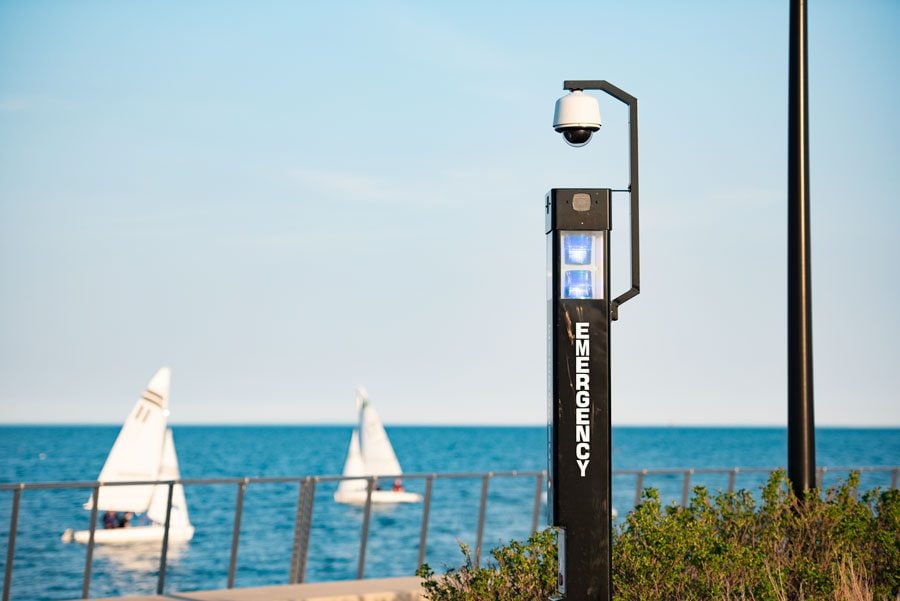What we know — and don’t know — about campus surveillance
Evan Robinson-Johnson/Daily Senior Staffer
A security camera atop an emergency Blue Light on the Evanston campus. The University uses a number of cameras to surveil the campus, both indoors and out.
May 14, 2019
When walking around Northwestern’s campus, students can expect to be watched, and not just by their classmates.
The University uses an unknown number of closed-circuit television cameras and other video recording devices to surveil public places on campus for the purpose of “safety and security,” according to the University’s Video Recording and Surveillance Policy, which University Police reviews annually.
The policy was last updated in January 2006, and it’s some of the only information available about campus surveillance. UP Chief Bruce Lewis did not respond to multiple requests seeking comment.
[Read the University policy on video recording and surveillance]
Here’s what we know — and don’t know — about the University’s surveillance procedures.
‘Public areas,’ including dining halls and libraries, are subject to video surveillance
According to the surveillance policy, video can be recorded in a number of spaces including, but not limited to, building perimeters, entrances and exits, hallways, laboratories and cashier locations. There are also some cameras placed outdoors.
The University has claimed to be combing through footage to solve cases of several racist incidents on campus, including the discovery of stickers sporting a white supremacist slogan — the fourth of which was found at The Garage in early May — and a noose found in Henry Crown Sports Pavilion in March.
In the cases of two stickers found in Allison dining hall and Main Library, respectively, a University statement said UP officers “reviewed video surveillance but could not find evidence of the perpetrators,” implying the presence of security cameras in those locations.
The noose’s presence was also subject to investigation, “including a review of security footage,” the University said in a statement.
Surveillance in residential areas is limited
According to the policy, cameras in residential areas are placed so “any view given to the housing will be no greater than what is available with unaided vision.” The view of any housing also can’t “violate the standard of reasonable expectation of privacy.”
The footage can and has been saved, but it’s unclear for how long
Earlier this month, a Cook County Circuit Court judge ordered the University to preserve footage collected in March in connection to a campus sexual assault. Judge Lauren Edidin agreed to sign the order at the request of the defendant’s attorney but said she didn’t know if the University kept the footage. The University is “cooperating fully with authorities in the criminal case, including complying with any court orders,” spokesman Bob Rowley told The Daily in an email.
According to the surveillance policy, the footage is deleted once the disk on which it’s stored is full, and the oldest footage is overwritten by the newest footage. But it can be “retained longer or transferred from the hard drive” if it’s connected to a criminal investigation, a legal proceeding or another case in which the UP Chief finds it necessary, according to the policy.
The policy contains no mention of a time frame of footage preservation, or a length of time after which footage is typically overwritten.
It’s hard to access
Footage is stored in a secure location, and only “authorized personnel” have access to it, according to the surveillance policy. The police department and other monitoring centers are configured to stop camera operators from “tampering with or duplicating recorded information.” Most of the time, it seems, the footage will remain untouched until it’s overwritten.
Footage can be released on occasion, but usually requires a formal request authorized by the UP chief and the Office of General Counsel. Recordings directly related to criminal investigations or arrests “required under a validly issued subpoena or other lawfully issued court order” are not subject to this same requirement.
Email: [email protected]
Twitter: @cameron_e_cook


